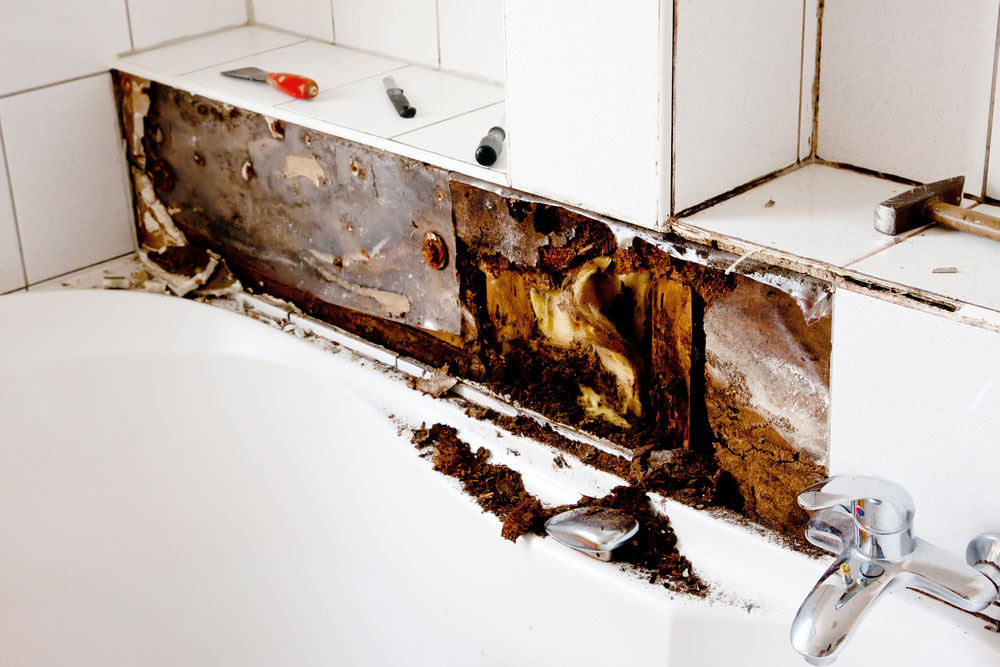Exactly How to Stop Water Damage in Your Bathroom
Request ServiceEverybody has got their own unique assumption in relation to How to Fix a Water Damage Bathroom.

The bathroom is extremely vulnerable for moist accumulation as well as prospective water damages due to the frequent use of water in it. This short article provides easy evaluation techniques to help discovering water damage risks.
The regular use of water in the restroom makes it very susceptible for moist accumulation and potential water damage. By inspecting it regularly, you can reduce water associated problems.
The following set of inspections is easy to execute and also need to be done as soon as in every 3 months in order to keep your restroom in good shape and to stop possible water problems triggered by the bathtub, the shower, pipe joints and also plumbing, sinks, closets, as well as the bathroom
Do not neglect performing these examinations as well as be extensive while performing them. Keep in mind that these straightforward examinations can conserve you a lot of money by giving very early indicators for water damage
Sinks and also Cabinets
Sinks as well as cabinets are exposed to dampness as well as humidity everyday and are usually ignored. Inspect regularly under the sink and also on the counter top above it. Fix any type of drip in the catch as it might suggest drainpipe problems. Check out the sink, sluggish draining pipes might indicate an obstructed drain. Replace sink seals if they are split or loose.
Bath tub as well as Shower
The shower and bath tub require unique interest and upkeep. Check the floor tiles as well as change if broken. Make sure that there is no missing cement between the floor tiles. Check and replace fractured caulking at joints where the walls satisfy the flooring or the bathtub. Obstructed drains as well as pipelines problems will protect against the bathtub from drying out and also may suggest significant problems underneath the bath tub. Speak with an expert immediately to stop structural damages. Take notice of stainings or soft locations around the tub walls as they may indicate an interior leakage.
Plumbing
Signs for water damage are difficult to find since the majority of pipes are installed inside the wall surfaces.
Pay unique interest to flooring as well as wall surfaces wetness and also stains as they might indicate an undetectable plumbing problem. Inspect dampness levels in adjacent rooms also.
The Toilet
The bathroom is a susceptible water joint. Check the water lines as well as look for leakages around the bathroom seat, in the tube, and also under the water container. If you spot any kind of signs of wetness on the flooring around the toilet, check for leakages in the toilet edge and storage tank seals.
Be aware that hanging bathroom dish deodorants increases the possibilities for clogs.
Water Damage Signs In The Bathroom To Avoid Cleanup
Musty smell
This is one of the easiest signs to catch because musty smells are so odorous. The damp, earthy, moldy smell should be a big red flag. The smell will develop when moisture gets trapped in surfaces, and begins to facilitate mold growth. Leaking pipes under cabinets, inside walls, and behind shower fixtures will cause moisture to stay trapped and not dry, which will lead to mold growth and spread. As soon as you notice any musty smells in your bathroom, have it checked for hidden water damage and cleanup signs.
Visible mold
If the smell isn’t there to give it away, sometimes you will actually see mold growth. Finding mold in your bathroom is a serious problem, because mold is very harmful to your health. By the time mold growth is visible, it also means that water damage has already occurred and been present for some time. The only way the mold problem can be resolved is to find the source of the moisture and get it stopped. To safely and adequately remove mold, you need to have professionals handle the remediation. Do not waste any time in getting mold problems addressed, fixed, and sanitized so that you can protect you and your family from the many respiratory symptoms caused by mold exposure.
Damaged floors
Bathroom floors should be able to withstand some exposure to water while still remaining in good condition. However, when excess exposure or water leaks occur, they will begin to damage even the most water-resistant flooring. If you notice any cracking, bubbling, staining, or warping on your bathroom floors, there is probably a water leak somewhere causing the distortion. If you notice areas of the floor have become softer, or even have a spongy feeling, there is probably damage to the subfloor. Subflooring is typically made up of plywood. When plywood is exposed to water or moisture, it will absorb it. Once it has become saturated, the weight of the excess water will cause the wood to swell and soften. Check the floors in your bathroom frequently to catch any of these sings before they lead to damaged subflooring.
Changes on walls
When water leaks behind walls, it will cause changes in the drywall. Peeling plaster, blistering paint, and soggy wallpaper are all good indicators that excess water is building up behind the wall. Water leaking behind drywall will cause it to swell and be soft to the tough. If you start to notice gaps along the trim of your walls, or where tile meets the wall, it could also be a strong indicator that there is a leak behind the wall. Any changes, distortion, or damage on the walls should be evaluated as soon as you notice it to prevent further water damage and cleanup.

As a devoted person who reads on How to Repair and Prevent Bathroom Water Damage, I imagined sharing that section was worth the trouble. Sharing is caring. Helping others is fun. Kudos for your time. Don't forget to come by our blog back soon.
Estimate Free